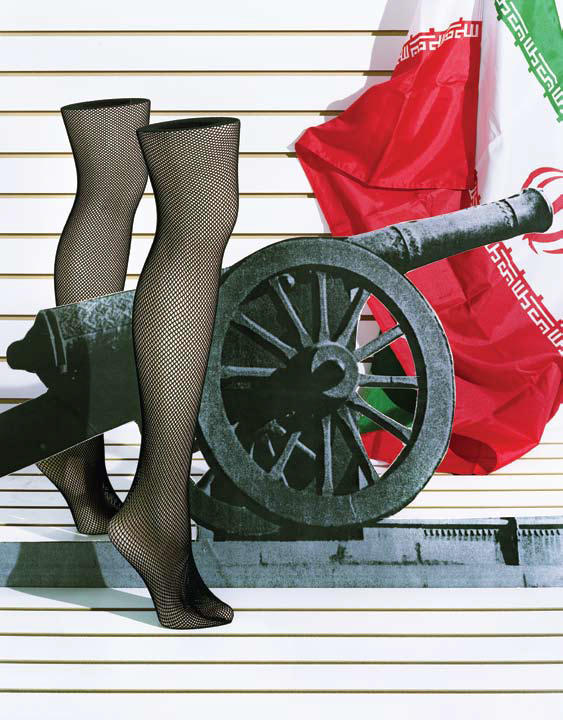
Once upon a time, before the home ovulation test, before hormone-replacement therapy and in vitro fertilization, before progestin and Clomid and Viagra — before Science, that is — a man or a woman in desperate straits might turn to other authorities. One might whisper the details of one’s predicament to the hakim or the single-toothed hag at the back of the bazaar. An infertile woman might dip an eggshell into the bath, gather water from the four corners of the hammam, and pour it onto her head. Some would make a bundle of grass and throw it into a stream on Sizde-Be-Dar, the thirteenth day of the New Year, while chanting:
Sizde-Be-Dar next year
In husband’s house with a child near
Often there was a special place, with a special object, a monument or relic, that could be entreated. In the city of Hamedan, the girls poured oil on Sang Shir, a lion-shaped stone at the top of a small hill in the central park. In Isfehan, just outside the city, there was a brass-topped minaret that girls used to sing to:
Brass-topped minaret, do not be annoyed by what I say
My between needs a hilt, a strapping man
In Tehran you might head over to the Toop Morvarid, the Pearl Cannon. In the middle of the old Arg Square — later Artillery Square, in honor of the cannon, and later still Imam Khomeini Square, where today the brown, ugly beehive of the Telecom building stands — there was a cannon that could cure the infertile and lift the curse of a childless marriage. It might even provide those who were lonely, with mates. The barren and the impotent, the debutante and the bachelor, the spinster and the wench — all gathered around the miraculous cannon on Charshanbe Soori, the last Wednesday of the year, and made a wish. Eyewitnesses say that the cannon blew confetti out of its barrel on special occasions.
What was the provenance of this miraculously potent ordnance?
The great Sadegh Hedayat’s etymological obsessions and his love of Iranian popular history drove him to write a book about the cannon. Toop Morvarid was his final book, a kind of hysterical last testament before his suicide in Paris two years later. Hedayat could only afford to produce fifty copies with a printer in India. Its eighty-eight pages feel like an unstinting, never-ending flow of acrid satire, an extended improvisation on the superstitions and inanities of post-eighteenth-century Iran, a broadside against the royals, their backwardness and demagoguery. Hedayat makes you laugh ruefully as the Pearl Cannon blows through page after page of wretched tyrants and credulous religious belief.
The cannon was said to have made its way from Bushehr to Tehran, some thousand kilometers, without human assistance. In any case, it had made its journey before Reza Shah’s Trans-Iranian Railway and long before the advent of the sublimely unreliable Tupolev airplanes.
Its origins, too, are obscure. Some say the Pearl Cannon was brought to Iran by the Portuguese in the sixteenth century, when Lisbon controlled the Strait of Hormuz from its base at Gameron; Shah Abbas enlisted the British to help him drive the Portuguese out, and the cannon was left behind. (The British stayed, too.) Others say it was brought by Nader Shah when he conquered India. And then there are some who believe it was created in 1817 by Ostad Ismail Rikhtegar Isfehani, a well-known molder during the reign of Fath Ali Shah Qajar. Today the suspicious or superstitious can still seek its blessing inside the police station near Imam Khomeini Square.
In his book, by way of conclusion, Hedayat wrote that, with the proper tools, the metal parts of the cannon could be whittled down to a wire .0007 millimeters thick, which could circle the earth seven times. That same quantum of brass, melted down, could be used to manufacture precisely 77,777 American dog whistles. Perhaps that could be the cannon’s final miracle?